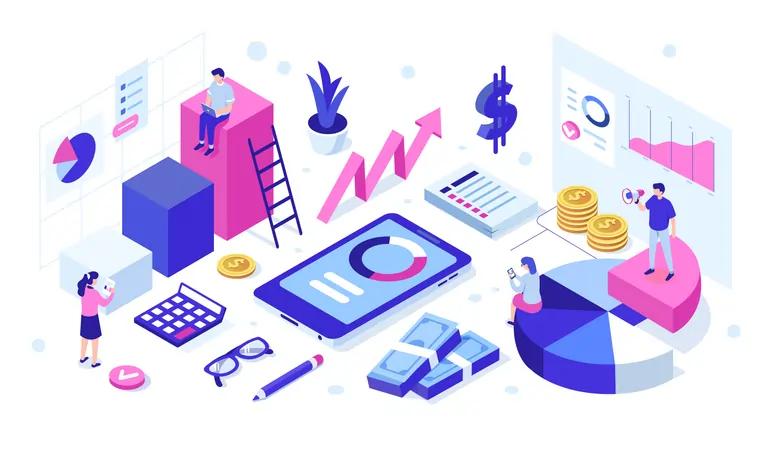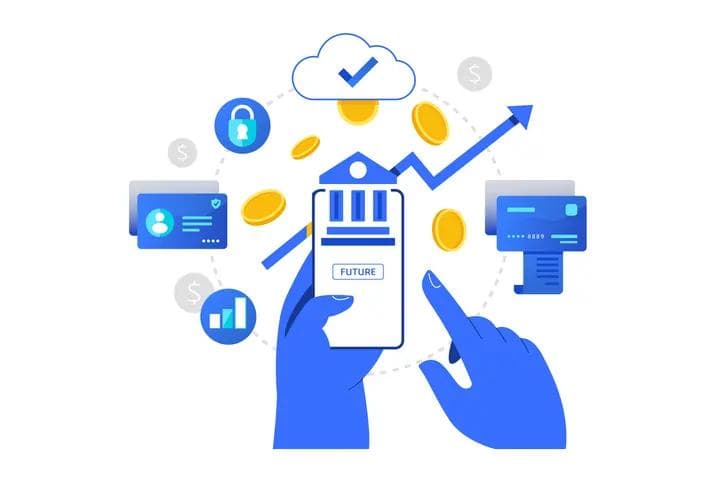Using Behavioral Analytics to Strengthen Customer Retention in Banking
Using Behavioral Analytics to Strengthen Customer Retention in Banking
Published by Wanda Rich
Posted on April 17, 2025

Published by Wanda Rich
Posted on April 17, 2025

Banks and credit unions are facing mounting pressure to retain customers, with attrition rates reaching as high as 15% annually. As competition intensifies and loyalty declines, behavioral analytics is emerging as a powerful tool to better understand customer behavior, anticipate needs, and foster long-term engagement.
The New Banking Reality
Customer loyalty in banking is no longer guaranteed. Today’s consumers are increasingly digital-savvy and more willing to change providers when their expectations go unmet. In fact, a significant 77% of banking customers now interact with their financial institutions primarily through digital channels—a shift that necessitates data-driven engagement and raises the bar for personalization.
The cost of this loyalty erosion is substantial. Retaining an existing customer is estimated to be five times more cost-effective than acquiring a new one, underscoring the importance of proactive retention strategies. In response, banks are turning to behavioral analytics as a transformative component of their customer engagement models—leveraging real-time insights to understand preferences, anticipate needs, and build stronger, longer-lasting relationships.
Understanding Behavioral Analytics in Banking
Behavioral analytics goes beyond tracking transactions or clicks—it focuses on uncovering the intent and patterns behind customer actions. In banking, this means analyzing how clients interact across digital touchpoints to detect shifts in behavior that could signal evolving needs or potential churn.
The market for behavioral analytics is expanding rapidly. Valued for its strategic relevance across industries, the global market is projected to reach USD 13.1 trillion by 2034, growing at a compound annual rate of 27.5%. This growth reflects a broader shift toward using predictive modeling to anticipate customer behavior in real-time for banks.
The results are promising. Some institutions have implemented churn prediction models that deliver up to 97% accuracy in identifying at-risk customers, enabling proactive outreach before dissatisfaction leads to attrition. This kind of foresight reshapes retention strategies—from reactive problem-solving to preventative engagement.
The Art of Hyper-Personalization
Hyper-personalization in banking moves beyond broad segmentation to deliver individualized experiences grounded in real-time behavior, preferences, and financial context. By combining behavioral analytics with AI and machine learning, banks can anticipate needs and provide timely, relevant services that evolve with the customer.
According to Luxoft, the future of retail banking will be shaped by “valuable life and financial experiences,” with banks shifting from transactional relationships to deeply personalized digital engagement.
Some leading institutions are already moving in this direction. Capital One provides users with digital tools like Map Your Spend to track and categorize purchases, and Eno, a virtual assistant that offers personalized alerts, spending insights, and account monitoring. These features help customers stay financially informed while building habitual engagement with the brand.
Chase has enhanced its mobile app to include customized savings goals, tailored budgeting tools, and insights based on user behavior. These updates create a more intuitive, adaptive interface—designed to fit each customer’s financial lifestyle.
Incorporating hyper-personalization strengthens loyalty and makes switching banks less attractive. When digital experiences reflect a deep understanding of individual needs, banks position themselves as indispensable partners in their customers’ financial journeys.
The AI Revolution in Banking
Artificial intelligence (AI) transforms the banking sector, particularly how institutions retain and engage customers. Yet, while the technology’s capabilities are growing, consumer sentiment remains cautious. According to the 2024 State of Digital Banking report by Glassbox, 60% of U.S. consumers view AI in banking as a double-edged sword, recognizing its potential benefits but expressing concerns about data privacy and trust.
Banks increasingly integrate machine learning and deep learning models into their customer engagement strategies to address this tension and improve service delivery. These technologies help financial institutions analyze customer behavior at scale, identify dissatisfaction signals, and predict potential churn before it occurs.
When applied effectively, AI enables banks to shift from reactive service models to proactive, personalized engagement. The result is stronger customer relationships, lower attrition, and a competitive edge in an increasingly digital-first financial environment.
The Human Touch in a Digital World
While data and algorithms can identify patterns, the most effective banks understand that a person with unique needs and expectations is behind every interaction. Interestingly, research shows that customers with higher account balances are actually more likely to switch banks, challenging the assumption that wealthier clients are more loyal. This finding underscores the importance of going beyond automation to deliver meaningful, relationship-driven service—especially for high-value customers.
To strengthen loyalty, banks must use behavioral insights to enhance—not replace—human engagement. When relationship managers are equipped with data about a client’s preferences, recent activity, and potential needs, they can offer timely, relevant support that feels personal and proactive. This blend of digital intelligence and human connection drives retention in an increasingly competitive market.
Privacy and Trust: The Delicate Balance
As banks adopt increasingly sophisticated analytics capabilities, they must carefully balance personalization with privacy. The future of banking analytics lies in real-time customization, enabling institutions to deliver highly relevant offers and experiences based on moment-to-moment behavior. However, this level of responsiveness must be grounded in transparent data governance and customer consent.
The most effective banks empower customers to control how their data is used while demonstrating the tangible benefits of sharing it. This may include clearly defined privacy settings, opt-in personalization features, and open communication about how data insights translate into better services.
Regulatory expectations also shape how banks approach customer data. Frameworks like the General Data Protection Regulation (GDPR) and the California Consumer Privacy Act (CCPA) require institutions to provide clear disclosures and mechanisms for user consent. In response, leading banks are introducing customizable privacy dashboards, consent-driven personalization options, and educational campaigns to help customers understand how their data is used—all while complying with local and international data protection laws.
By aligning personalization with transparency and choice, banks can build the trust needed to support deeper digital engagement—without compromising ethics or compliance.
The Road Ahead
As the banking industry evolves, staying competitive requires a forward-looking approach grounded in data, technology, and customer-centricity. Recent trends in retail banking indicate that enhancing data and analytics capabilities—especially through AI—is now a top strategic priority for banks seeking to improve customer engagement and streamline operations.
Looking ahead, the most successful institutions will embrace continuous innovation while staying grounded in transparency and trust. This includes refining digital experiences, scaling predictive analytics, and integrating customer feedback into every stage of service design.
By committing to this transformation, banks can move from reactive service models to anticipatory, relationship-driven strategies—turning data into a foundation for long-term loyalty and growth.
Creating Lasting Customer Relationships
The actual value of behavioral analytics in banking lies not just in improved metrics—but in fostering deeper, more resilient customer relationships. When implemented thoughtfully, these tools help banks move beyond transactions, positioning themselves as trusted partners in their customers’ financial lives.
Institutions that excel in this space will do more than reduce churn—they’ll cultivate loyalty, advocacy, and long-term engagement. In an environment where switching providers is increasingly frictionless, building meaningful, data-informed relationships is no longer optional; it’s a strategic necessity.
Looking ahead, the banks that succeed will strike the right balance: using behavioral insights to anticipate needs and drive personalization while preserving the human connection at the heart of enduring financial relationships.
Explore more articles in the Banking category











